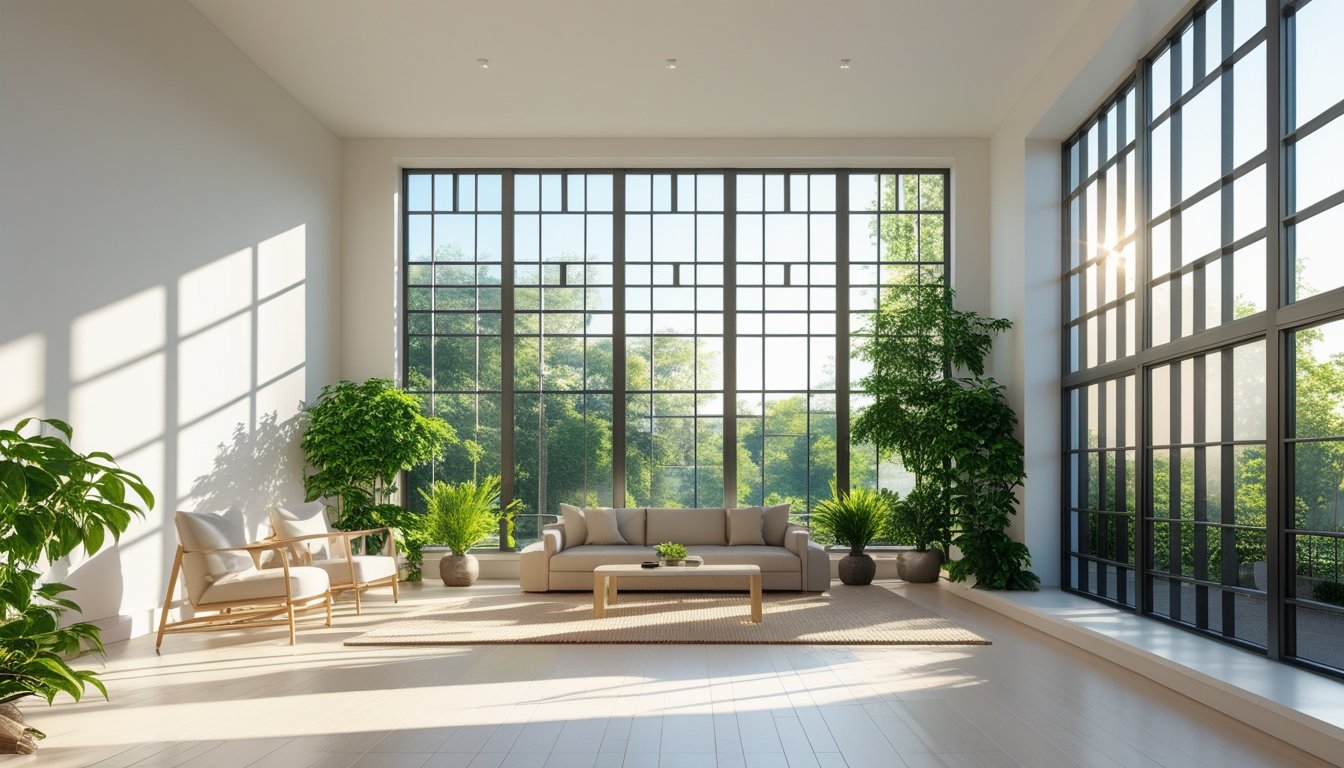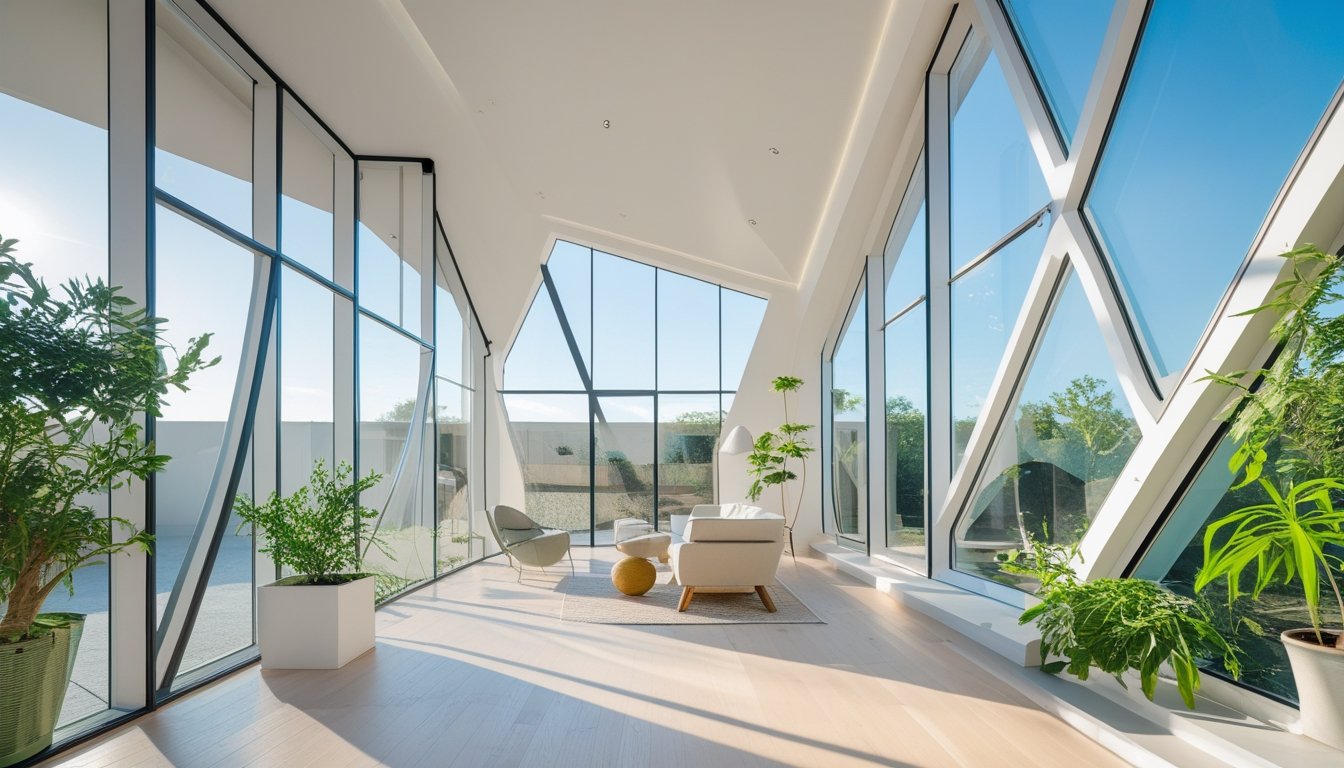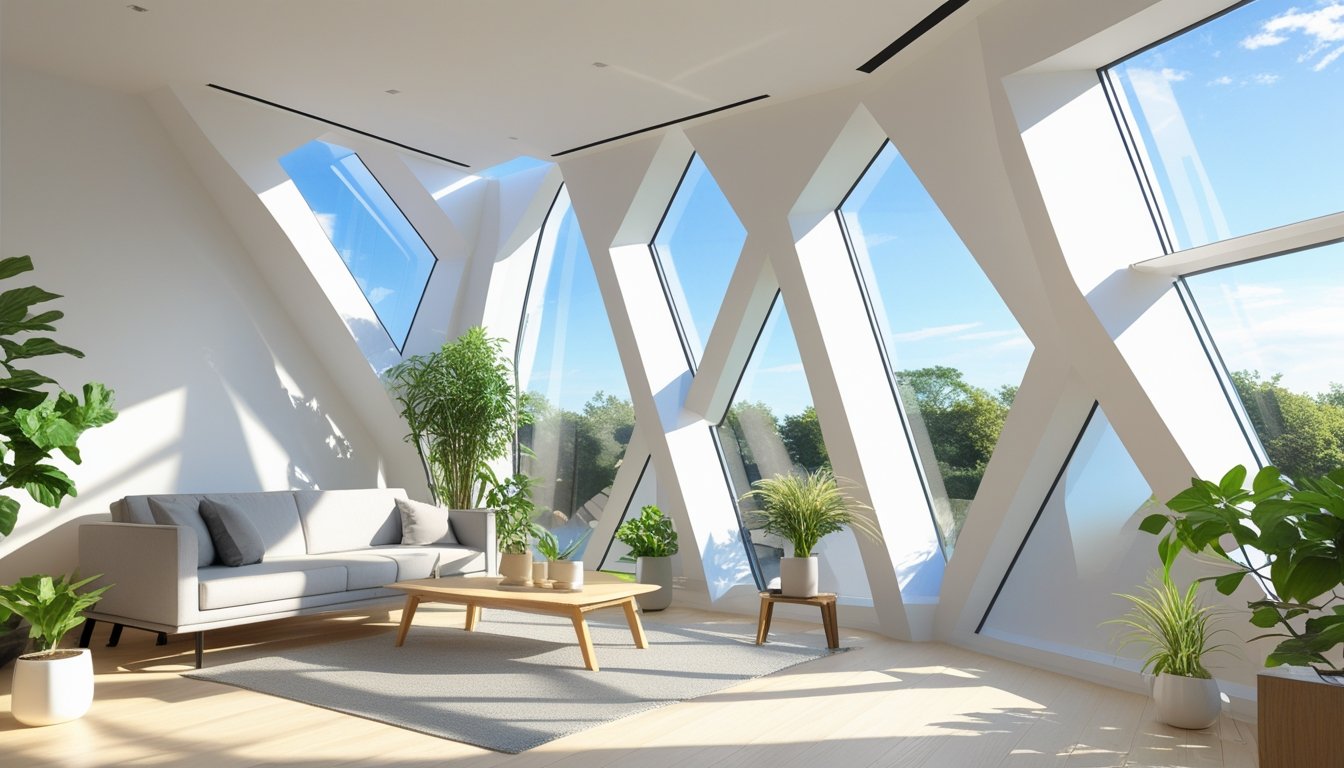Late updated: 14 Jun 2025 08:06
Written by: Oliver Bennett
Maximising Natural Light With Creative Window Designs: Expert Tips and Ideas
Maximising natural light in our homes has become not just a trend but a necessity in modern home design. With the right window designs, we can transform spaces into vibrant, energy-efficient environments that enhance our wellbeing and aesthetic enjoyment. By using creative window layouts and innovative designs, we can harness more daylight, making interiors feel larger, more welcoming, and connected to the outdoors.

Incorporating imaginative design solutions such as strategic window placement and the use of skylights allows us to fill our homes with sunlight throughout the day. These design choices not only improve aesthetic appeal but also reduce the need for artificial lighting, significantly enhancing energy efficiency. We stand to benefit from rooms that appear both functional and visually inviting.
Key Takeaways
- Creative window designs enhance natural light and energy efficiency.
- Innovative layouts can transform the aesthetic appeal of our homes.
- Strategic placement of windows and skylights is key for maximising daylight.
Fundamental Principles of Maximising Natural Light in Home Design
Maximising natural light in home design offers numerous advantages, ranging from enhanced aesthetic appeal to energy efficiency. By strategically placing windows and optimising interior design elements, we can fully harness the benefits of sunlight to improve living spaces.
Key Benefits of Natural Light
Natural light brings a myriad of benefits to our homes. Firstly, it contributes significantly to the aesthetic appeal of a space, providing a bright, welcoming atmosphere. Exposure to natural light is linked to improved productivity and mental well-being, making it invaluable for both work and leisure environments. Beyond aesthetics and mood enhancement, natural light is an energy saver too.
We can reduce our reliance on artificial lighting, cutting energy consumption and lowering electricity bills. This increase in energy efficiency makes sustainable living more achievable, contributing positively to both our pockets and the environment. Incorporating ample natural light juxtaposes functionality with beauty, enhancing the value and comfort of our homes.
Impact of Window Placement and Orientation
Strategic window placement is crucial. South-facing windows capture the most sunlight, ideal for living areas and spaces requiring abundant light. Alternatively, east-facing windows welcome morning sun, perfect for bedrooms to naturally align with our waking hours. Meanwhile, west-facing windows offer afternoon and evening light, beneficial for dining areas or spaces used later in the day.
In contrast, north-facing windows work well in areas where reduced light suffices. By carefully considering each room’s purpose and aligning window placement accordingly, we optimise sunlight exposure effectively. This thoughtful orientation not only enhances aesthetics but also improves indoor temperature control, contributing to a comfortable living environment year-round.
Optimising Light Penetration with Interior Design Choices
Interior design choices significantly impact how light permeates our homes. Selecting light-coloured walls and reflective surfaces amplifies illumination, bouncing light deeper into rooms. Large mirrors can be strategically placed to reflect sunlight, doubling the light's reach and adding to the sense of space. Our choice of layout plays a pivotal role too.
By positioning furniture to allow unobstructed light flow, we maximise brightness and make spaces feel more expansive. Embracing minimalist design elements prevents clutter, further enhancing light penetration. Collectively, these interior design strategies ensure we make the most of the natural light available, transforming our living spaces into vibrant and efficient environments.
Creative Window Designs and Innovations for Natural Light Enhancement

Creative window designs play a crucial role in enhancing natural light within spaces. By selecting the appropriate styles, incorporating innovative glazing technologies, and integrating architectural features, we can significantly transform any home.
Choosing the Right Window Styles
Selecting the right window style can vastly improve natural lighting. Casement windows are excellent for their versatility and provide wide openings. Picture windows offer unobstructed views and maximise light by allowing sunlight to flood interiors. For a touch of elegance, bay and bow windows extend outward, creating additional interior space and capturing light from various angles. Consider arched windows for their aesthetic appeal, often used in period properties.
Incorporating Specialised Glazing and Glass Features
Advanced glazing options such as double glazing improve energy efficiency while maintaining clarity. Smart glass technology enables control over opacity, allowing us to adjust the amount of light and privacy as needed. Furthermore, specialised coatings on glass can reduce glare and deflect heat, creating a comfortable atmosphere and protecting furniture from UV damage.
Maximising Light through Architectural Features
Architectural innovations such as skylights and roof windows introduce vertical light sources, ideal for rooms with limited wall space. Clerestory windows positioned high on walls add light without sacrificing privacy. Incorporating transom windows above doors can distribute light throughout a home. Additionally, solar tubes are great for bringing natural light into interior spaces without direct window exposure.
Integrating Glass Doors and Modern Window Treatments
Sliding glass doors and French doors merge indoor and outdoor spaces, maximising light entry. They also serve as aesthetic enhancements, providing elegant transitions between rooms or onto patios. For window treatments, sheer curtains offer a balance between light filtration and privacy. Opt for modern designs and materials that complement the overall window design while not obstructing light.
Supporting Ventilation and Indoor Air Quality
Effective window design also supports healthy airflow. By incorporating large windows with opening mechanisms, we can improve ventilation and indoor air quality. Strategically placed windows like casements can direct fresh air through a home. Adequate ventilation reduces humidity and pollutants, providing a healthier living environment. Taking ventilation into account ensures our homes benefit from both light and air circulation.
Frequently Asked Questions

Maximising natural light in our homes involves strategic window design, careful consideration of room layouts, and selecting suitable treatments. These elements together create spaces that are both welcoming and energy-efficient.
How can one increase the amount of sunlight entering a room through window design?
To increase sunlight, we can install larger windows and opt for open floor plans. Using glass doors or including skylights can also bring in more light. Selecting windows with minimal obstructions and locating them on multiple walls enhances light coverage.
What are effective methods for simulating natural light in areas with limited windows?
For areas with limited windows, using light-coloured walls and reflective surfaces helps mimic natural light. LED lighting with a daylight spectrum can replicate the feel of natural sunlight over artificial sources, creating a brighter environment.
Which direction should windows face to optimise the intake of natural daylight?
North-facing windows provide consistent light throughout the day. In the northern hemisphere, south-facing windows capture maximum sunlight, making rooms warmer. East-facing options enjoy morning sun, while west-facing ones catch afternoon rays.
What are innovative window treatments that can enhance light flow without compromising privacy?
Sheer curtains and smart blinds allow light while maintaining privacy. Frosted glass or perforated window films can also be beneficial. Layering treatments offer versatility in adjusting light and ensuring privacy according to our needs.
How can the layout of a room be planned to maximise the benefits of natural lighting?
Open layouts with fewer partitions let light travel freely. Positioning furniture away from windows prevents obstruction. We can also use mirrors to reflect and distribute light evenly across the room’s space, making the area feel larger.
In what ways can the integration of artificial and natural lighting be balanced for interior spaces?
Pre-installed dimmers and smart lighting systems can help balance natural and artificial lighting, complementing daylight. Combining these with reflective materials and light-coloured furnishings enhances illumination while maintaining energy efficiency. It's about creating harmony between various light sources in our interiors.
